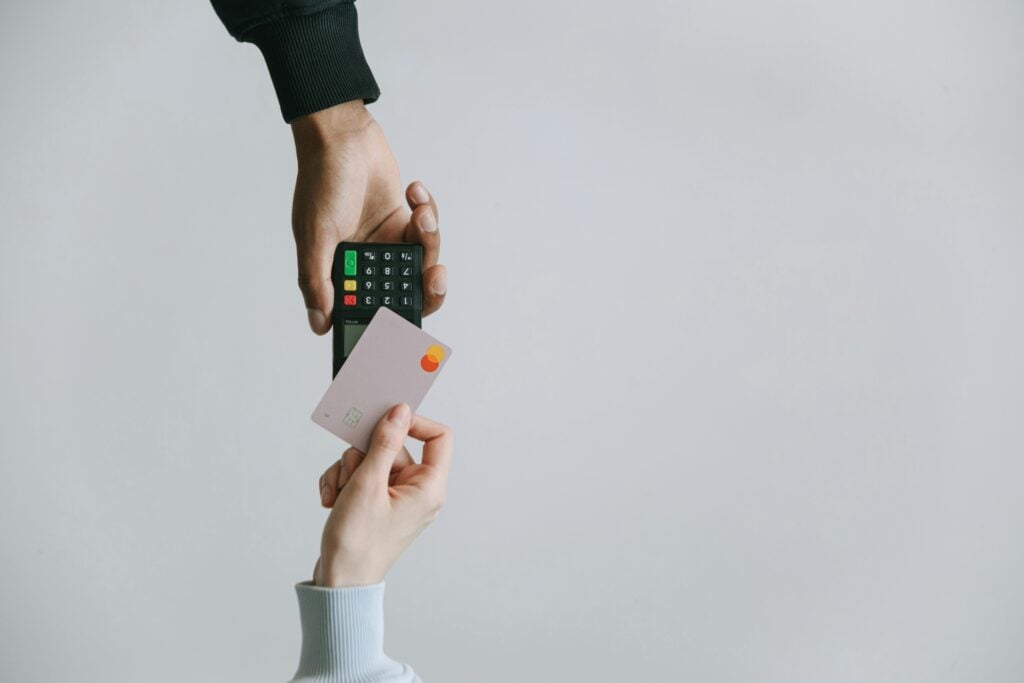Monetising digital products can be challenging. It requires a clear understanding of the problem your product solves and the business objectives it supports. Without that clarity, unexpected costs can arise—especially when pricing doesn’t align with user expectations or the perceived value of the product.
E-commerce businesses are often seen as pioneers in monetisation innovation, but as traditional revenue streams evolve, even they must adapt to stay competitive. The key to effective monetisation lies in understanding your users, delivering consistent value, and choosing the right model to match both business goals and user behaviour.
In this article, we explore proven monetisation strategies, supported by real-world insights and expert guidance, to help you maximise the revenue potential of your digital product.
Understand Your Users and Their Needs
We live by a user-centric philosophy, focusing on what matters most to your users and your business. While it might seem obvious to ask, “What do our users want?” it’s a question that’s often overlooked in pursuit of short-term wins.
Successful monetisation begins with building the right product—one that fits the needs and expectations of your audience. That means going beyond what customers buy, and looking at how they interact with digital experiences, what they expect in return, and how they make decisions. With 71% of consumers expecting personalised experiences, and 76% feeling frustrated when they don’t receive them, aligning your monetisation strategy with user behaviour is essential. Whether you explore freemium, subscriptions, or in-app purchases, the right model depends on understanding what your users truly value.
“With 71% of consumers expecting personalised experiences, and 76% feeling frustrated when they don’t receive them, aligning your monetisation strategy with user behaviour is essential.”
What Is a Subscription Model?
The subscription model offers users continuous access to a product or service in exchange for recurring monthly or annual payments. It’s a tried-and-tested approach prioritising convenience, consistency, and ongoing value. When positioned correctly, subscription-based experiences remove friction from the buying process and create an easier alternative to repeated, one-off transactions. For users, it’s less about purchasing and more about being part of an evolving experience.
Take wine clubs and wine subscriptions, for example. By moving away from the “mainstream” wine-buying experience, these services position themselves as exclusive, curated communities, elevating the offer beyond the product itself. There’s emotional value in belonging, with practical ease and time saved. One leading UK wine retailer reported over 80% revenue growth between 2020 and 2022, citing the success of subscription-based memberships and the growing demand for convenience with a premium feel. The model streamlines decision-making and transforms a standard purchase into an ongoing relationship.

Why Choose a Subscription Model?
Choosing a subscription model over freemium or in-app purchases ultimately comes down to aligning with your business goals, product type, and audience needs. But when the fit is right, subscriptions offer a powerful combination of revenue predictability, scalability, and user retention. They remove the unpredictability of one-off purchases and tie revenue directly to ongoing engagement and satisfaction.
Subscription-based services nurture long-term relationships between businesses and users, allowing for confident investments in product development and updates. With 38% of UK consumers saying they see subscriptions as good value (Barclaycard Payments), this highlights just how important it is to consistently deliver and reinforce that value overtime. Additionally, the subscription economy in the EMEA region is growing at a Compound Annual Growth Rate (CAGR) of 25.6%, outpacing FTSE growth and reinforcing the strength of subscription models.
“Subscription-based services nurture long-term relationships between businesses and users, allowing for confident investments in product development and updates.”
The Psychology of Subscription Models
The success of the subscription model is deeply rooted in behavioural science. At a foundational level, subscriptions tap into habit formation, predictability, and perceived accumulating value. Research shows consumers are more likely to commit to recurring payments when they perceive continuous, accumulating value rather than a single transactional benefit. Subscriptions reduce the cognitive load of repeated decision-making. Once users commit, the mental friction of “Should I pay for this?” is removed. This plays into the default bias—the human tendency to stick with a chosen option, especially when opting out requires additional effort.
Real-world examples like Gousto show how powerful this model can be when executed well. Its weekly subscription service doesn’t just deliver meals—it offers tailored convenience, decision reduction, and the feeling of a smarter lifestyle. Subscribers aren’t buying food; they’re investing in a more streamlined way of life. When practical value and emotional benefit align, the subscription model becomes more than a payment structure—it becomes part of the user’s routine.
Beyond that, other powerful psychological triggers are at play. The endowment effect suggests that once users have access to something, they value it more—so as they use a service regularly, they feel ownership over it. This increases their likelihood of continuing to pay. Subscriptions also appeal to our desire for consistency and control which are two key motivators identified in behavioural economics. Users who feel a product is predictable, reliable, and tailored to their needs are far more likely to stay engaged over time. For businesses, this translates into lower churn, higher customer lifetime value, and a wealth of first-party data that can be used to personalise experiences and drive even more value for subscribers.
“The endowment effect suggests that once users have access to something, they value it more—so as they use a service regularly, they feel ownership over it. This increases their likelihood of continuing to pay.”
What Is a Freemium Model?
The freemium model allows users to access a product or service for free with the option to upgrade to a paid version, unlocking premium features. It’s designed to drive wide-scale adoption by eliminating the cost barrier, making it easier for users to try a product, build trust, and engage at their own pace. While giving away part of your offering may seem counterintuitive, it’s a proven strategy used across industries from retail to digital services to demonstrate value before asking for a commitment.

Take Spotify, one of the UK’s most-used streaming services, as a leading example. Its freemium approach gives users free access to music with ads and limited functionality, allowing them to explore the platform before upgrading to a premium plan. According to a recent Spotify Annual Report, over 60% of paying subscribers started on the free tier, which is clear evidence of freemium’s effectiveness in driving conversion at scale. Today, over 80% of mobile apps use some form of freemium model, with average conversion rates between 2–5%, depending on the quality of the user experience and product design (Statista, 2024).
“Today, over 80% of mobile apps use some form of freemium model, with average conversion rates between 2–5%, depending on the quality of the user experience and product design.”
Statista, 2024
Why Choose a Freemium Model?
Freemium is a popular strategy for businesses launching new digital products, particularly those with low delivery costs and high user appeal, like SaaS tools, creative platforms, and wellness apps. It’s an effective way to establish product credibility and showcase value early on, all without asking users to make a financial commitment upfront. By creating early positive interactions, freemium reinforces the perceived value of your product, making the eventual upgrade to premium feel natural and frictionless.

From a business perspective, freemium supports a product-led growth strategy. Rather than relying on aggressive sales tactics, the product experience drives adoption, retention, and conversion. It allows businesses to build large user bases, gather valuable behavioural data, and fine-tune their monetisation strategy based on how users interact with the product in real-world scenarios. When implemented well, freemium is both a marketing tool and a monetisation strategy that introduces your brand to more users while providing a clear upgrade path.
“By creating early positive interactions, freemium reinforces the perceived value of your product, making the eventual upgrade to premium feel natural and frictionless.”
The Psychology of Freemium Models
Freemium models’ alignment with core behavioural psychology principles makes them powerful. At the heart of it lies the foot-in-the-door effect, offering value upfront, which reduces the friction of entry and increases the likelihood of future commitment. Once a user starts engaging with your product, they begin to invest time and effort, creating a sense of ownership. This activates the endowment effect, where users place higher value on something they’ve already experienced or built. If they’ve made a playlist, designed a project, or built up a learning streak, the fear of losing progress—loss aversion—becomes a powerful motivator to upgrade.
“Freemium works because it allows users to sell the product to themselves”
Freemium also leverages habit formation and emotional momentum. Users build routines around your product as they complete tasks, unlock achievements, or receive personalised results. These become ideal moments to introduce upgrade prompts when users are emotionally invested and most likely to see the added value. Brands like Canva, Spotify, and Duolingo have mastered this, using a mix of progress gating, feature teasers, and micro-rewards to create seamless upgrade paths. Ultimately, freemium works because it allows users to sell the product to themselves, moving from curiosity to commitment through a personalised and psychologically rewarding experience.
What Is an In-App Purchase Model?
In-app purchases (IAPs) are a widely used monetisation method in mobile and digital products. They offer users access to enhanced features, exclusive content, or virtual goods without requiring an upfront cost or ongoing subscription. You’ll often see the familiar “Offers In-App Purchases” badge when browsing the App Store or Google Play, signalling that the core experience is free to use, but additional elements are available.
Unlike freemium models, which typically offer a premium tier or subscriptions focusing on ongoing access, IAPs are transactional and on-demand. They allow users to customise and enhance their experience at specific points in their journey—often in response to a personal milestone, challenge, or need. From unlocking bonus content to purchasing digital items, IAPs allow users to spend only when they perceive real, immediate value. According to Statista, in-app purchases accounted for 48.2% of global mobile app revenue in 2023. IAP revenue exceeded £1.2 billion in the UK alone, reflecting a growing consumer appetite for personalised, modular digital experiences.
“From unlocking bonus content to purchasing digital items, In-App Purchases allow users to spend only when they perceive real, immediate value.”
Why Choose an In-App Purchase Model?
IAPs offer a compelling path to monetisation, particularly for apps that rely on high engagement and repeat interactions—such as fitness platforms, learning tools, creative apps, or mobile games. This model allows businesses to maximise revenue without alienating their user base, allowing users to pay for precisely what they want when they want it. It’s ideal for companies aiming to serve a large audience while creating opportunities for deeper monetisation through choice and personalisation.
Unlike subscriptions, which require a commitment, or freemium models that focus on conversion over time, in-app purchases provide micro-moments of value exchange. When implemented well, these purchases feel like a natural extension of the user experience—they enhance rather than interrupt. Whether it’s a productivity tool offering advanced templates or a language app providing specialised content packs, IAPs work best when they’re contextual, relevant, and tied to user success. At Sonin, we help businesses build IAP strategies that are seamless, scalable, and aligned with user expectations—creating revenue streams that feel integrated, not intrusive.

The Psychology of In-App Purchases
In-app purchases succeed because they tap into key behavioural principles: instant gratification, autonomy, and emotional timing. Users are more likely to make purchases when they feel in control of the decision and when the value is immediate and clear. This aligns with self-determination theory, which emphasises autonomy as a core motivator. Unlike a subscription prompt, which might create decision fatigue, a well-timed IAP feels empowering—allowing the user to enhance their experience when it matters most.
IAPs also benefit from the peak-end rule, a psychological concept that suggests people remember experiences based on the most emotionally intense moments and how they end. Offering an upgrade right after a user completes a goal or milestone amplifies the perceived impact and increases the likelihood of conversion. On top of that, users who have already invested time and effort in the app are influenced by loss aversion and the sunk cost fallacy—they don’t want to lose progress or miss out on enhancements that improve their journey. Apps like Strava, Calm, and top-tier mobile games use these principles to create upgrade moments that feel rewarding, timely, and user-driven. When IAPs are designed around these emotional cues, they drive revenue and deepen the overall user experience.
Your Path to Digital Success
When it comes to monetisation, there’s no one-size-fits-all solution. Freemium models build reach and trust by offering upfront value—ideal for products that thrive on scale and habit. Subscription models create predictable revenue and foster deeper user relationships, especially when value is delivered consistently over time. In-app purchases, meanwhile, offer flexibility—allowing users to personalise and enhance their experience at key moments. Each model has its strengths, but choosing the right one depends on your product, your users, and the value you’re delivering. Understanding those elements is where the real opportunity lies.